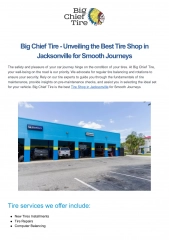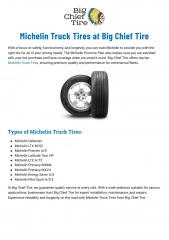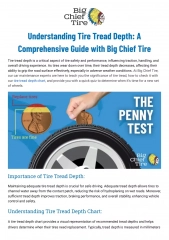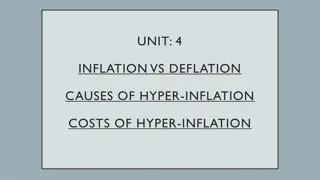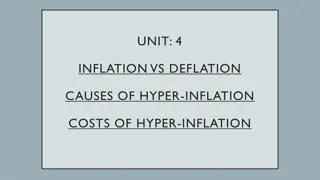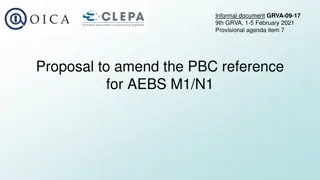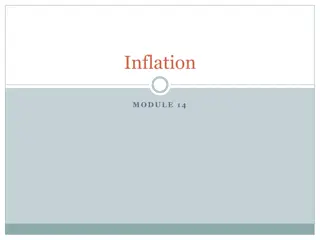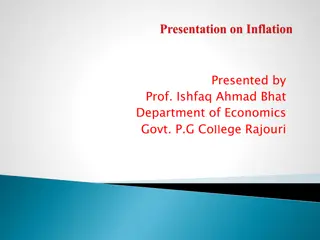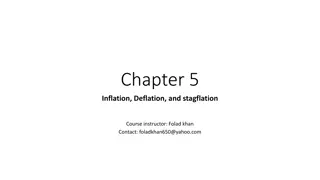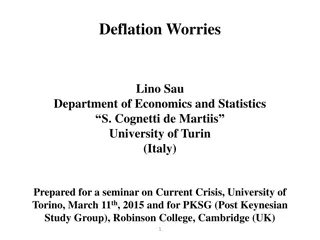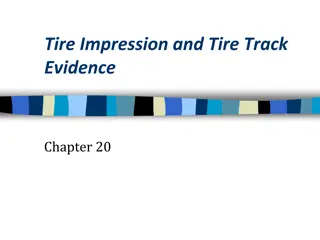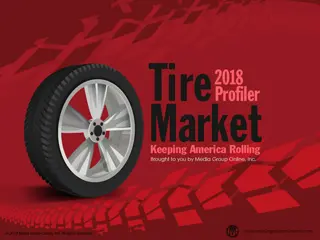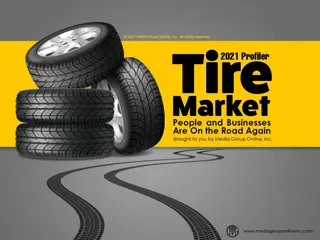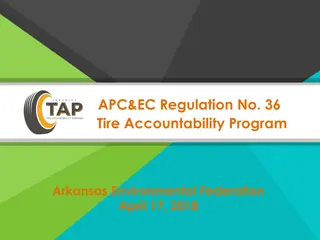Enhanced Self-Inflation/Deflation Technique for Improved Tire Performance
Improved self-inflation/deflation technique developed by Deepak G at R.M.K. Engineering College offers quick inflation and deflation, enhancing safety, fuel efficiency, and reducing pollution. The innovation aims to address under-inflation issues leading to accidents, injuries, and deaths, as well as increased fuel consumption and pollution. Key differences from existing techniques include faster inflation, user-controlled deflation, and enhanced safety features.
Download Presentation

Please find below an Image/Link to download the presentation.
The content on the website is provided AS IS for your information and personal use only. It may not be sold, licensed, or shared on other websites without obtaining consent from the author. Download presentation by click this link. If you encounter any issues during the download, it is possible that the publisher has removed the file from their server.
E N D
Presentation Transcript
Improved Self Inflation/deflation technique Deepak. G[111713114056] 3rdyear, Mechanical Dept. R.M.K Engineering College Mentor: Sivakumar.V Assistant Professor Mechanical Dept. R.M.K Engineering College
Improved Self Inflation/deflation technique Existing Technique Improvements made in the existing technique What is the need of this technique? How proposed technique differ from existing technique? Market Overview Target Customers Future plans Functional Flowchart Time Graph Cost Analysis
Existing Technique 1.An internal regulator senses when the tire inflation pressure has dropped below the optimum pressure. The regulator then opens to allow air flow into the pum ping tube 2.As the tire rolls, the deformation of the tire flattens the tube, pushing the air through the tire to the inlet valve 3.The air flows into the tire cavity,resulting in optimized tire pressure NOTE:CODA Industries in germany, holds patent for this technique.
Improvements made in the existing technique 1.Quick Inflation Inflating and deflation is done in lesser time due to temperature of exhaust gases.
2. Deflation Deflation is done by the user, using the digital display system,Which operates based on the sensor signals.
What is the need of this technique? Improved safety: Estimated that 41% of accidents with physical injuries are linked to tire problems. Under-inflated tires lead to tread separation and tire failure, resulting in 40,000 accidents, 33,000 injuries and over 650 deaths per year Increased Fuel Efficiency:The European Union reports that an average under-inflation of 40 kPa produces an increase of fuel consumption of 2% and a decrease of tire life of 25%. Reduced pollution: The European Union concludes that tire under-inflation today is responsible for over 20 million liters of unnecessarily-burned fuel, dumping over 2 million tonnes of CO2into the atmosphere, and for 200 million tires being prematurely wasted worldwide.
How proposed technique differ from existing technique? Existing Technique Proposed Technique Time taken for inflation is high. Time taken for inflation is low. Deflation is not done. Deflation is done,whenever required(slopy areas). Accident is possible in low friction (between tyre and road) areas due to high inflation. Accidents due to slippery roads are reduced. Atmospheric air is used for inflation of tyres. Exhaust air,is used to provide effective inflation.
Market Overview Low production costs The Proposed system is very simple and easy to integrate into the current tire manufacturing process. It consists only of two new tire components: -Peristaltic tube chamber integrated into the tire wall. -Automatic pressure regulator with interface connecting the tire interior with outside environment. -Production of ISIT tires will be only marginally more expensive than the production of today s regular tires. -A copper Intercooler is used for cooling purpose. Higher profit margins Low costs and a high added value create room for increase of profit margins.
Target Customers: 1.People using automotive in hilly areas. 2.Goods loading vehicles used for transportation. 3.Vehicles in abroad. Future plans: Militiary vehicles with bullet resistant tyres can be made by improving this technique at a marginal manufacturing cost
Functional Flowchart Exhaust gases from the silencer Intercooler Tyre pressure regulator User Interface Self-Inflation Deflation
Outlook design for the proposed technique 1.For two wheelers
WORKING AREAS 1.EXHAUST GAS ANALYSIS 2.PERISTALTIC TUBE 3.MOTOR 4.PRESSURE SENSOR 5.SELCTION OF TYRE,SHAFT,RIM 6.ENGINE CALCULATIONS 7.PRESSURE REGULATOR
Cost Analysis S.no Elements Cost 1. Tyre with proposed Peristaltic tube chamber design Rs.15000/- 2. Intercooler(copper) Rs.4000/- 3. Pressure Sensor Rs.5000/- 4. Electronic sensor and control unit Rs.3000/- 5. MOTOR(5HP) Rs.5000/- 6. Pressure regulator Rs.2500/- 7. Shaft & jack setup Rs.7000/- TOTAL RS.41,500/-




